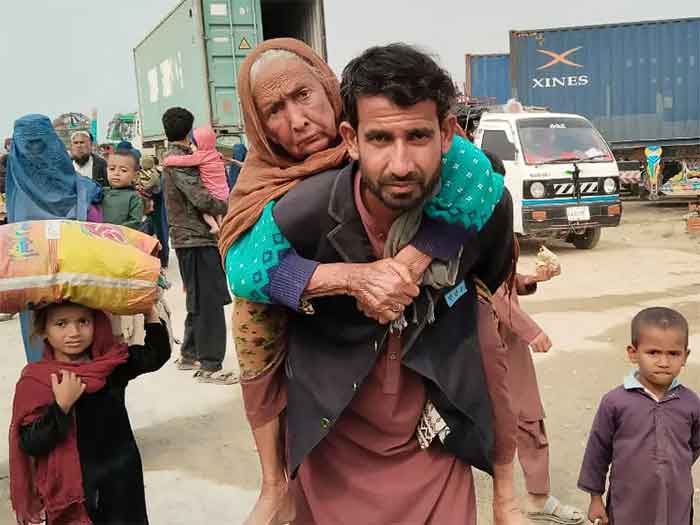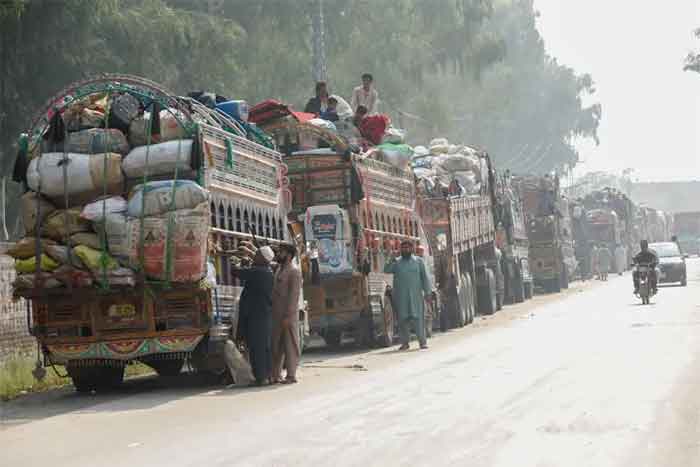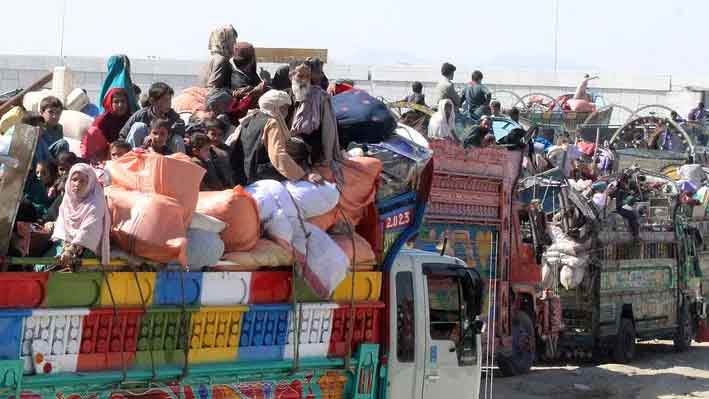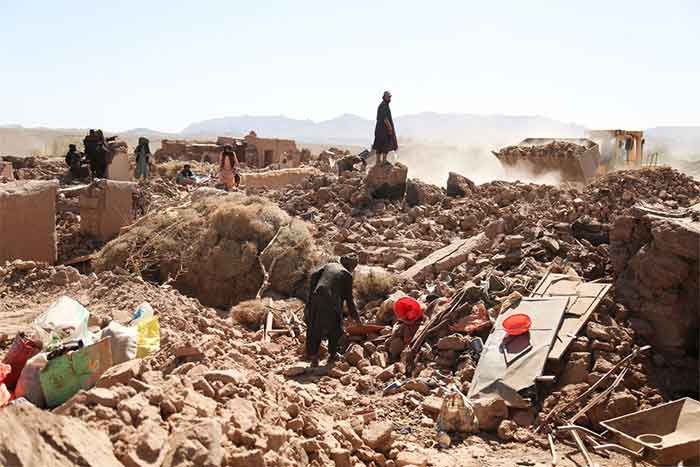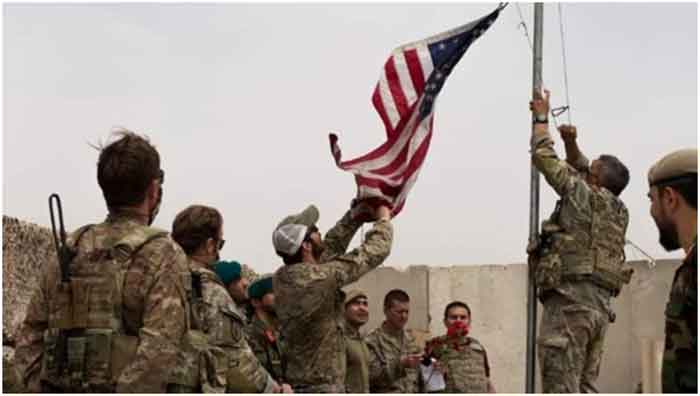
Developments in Afghanistan, prior to and after its takeover by the Taliban, remind us of the political realignment of global powers in Europe on the eve of the 2nd World War. Although a tiny state (covering 652,000 km – slightly smaller than Texas – with a population of 26.5 million), Afghanistan might well be the pivot on which the reconfiguration of today’s global geo-politics would turn. As Lord Curzon, the Viceroy of India in 1898, observing events in Afghanistan at that time, said: “ …countries are pieces on a chessboard upon which is played out a great game for the domination of the world.” It was small states like Czechoslovakia and Poland which became sites for contests, followed by agreements signed by Western ruling powers in the late 1930s for the `domination of the world,’ that was to lead eventually to a fundamental transformation of world politics.
What paved the way for the success of the Taliban was the Doha agreement of February 29, 2020, signed by the US and the Taliban. Under the quid-pro-quo understanding, the US forces were to leave Afghanistan and the Taliban would stop anti-US terrorist forces from operating from there, and enter into talks with the Afghan government for bringing about peace. From day one however, the agreement was in tatters. The Taliban refused to have any talks with the then Ghani-led Afghan government, and instead went on a spree of violence, capturing one district after another, taking advantage of the absence of US troops which were in the process of gradual withdrawal. While the US kept to its bargain, the Taliban ignored it with total impunity, finally entering Kabul on August 15. During the months preceding it, the US remained a silent spectator to the long trail of killings and destruction left by the Taliban during their march to Kabul – an open breach of the terms of the Doha agreement.
Shadows of the Munich Agreement
The background of the Doha agreement and its aftermath look ominously familiar when we remember another agreement that was signed by global powers on September 30, 1938. This was the time when Hitler had risen to power in Germany, termed his regime as the Third Reich and was preparing for territorial conquest. Since his assumption of power as the Chancellor in 1933, Hitler had been pursuing a policy marked by brutal suspension of civil liberties, elimination of political opposition, militarization of the nation, and anti-Semitism (the latter legalized by the Nuremburg Laws of 1935) in Germany. In his foreign policy, he began to expand Germany’s borders by first sending his troops to re-occupy the demilitarized left bank of the Rhine in March, 1936. Over the next two years, Nazi Germany struck up alliances with Japan and Italy (the three were to be known as the Axis Powers during the 2nd World War). Hitler then annexed Austria, and started moving towards Czechoslovakia.
It was at this juncture that England and France stepped in. In order to stall further attempts at aggression by Hitler on European territory, the British Prime minister Neville Chamberlain and his Frenchcounterpart Edward Daladier met Hitler and his Italian ally Mussolini at Munich on September 30, 1938. Completely ignoring Hitler’s inhuman acts of atrocities on his own people in Germany, England and France were more eager to protect themselves at the cost of other victims of German aggression. The three hammered out a pact on September, 1938 known as the Munich Pact. The agreement was reached under Hitler’s terms, in accordance with which Czechoslovakia was made to cede a part of its territory, Sudetenland to Germany. The next day, gloating over the agreement, Chamberlain described it as “symbolic of the desire of our two peoples (English and German) never to go to war with one another again.” But not all in England shared his optimism. His fellow politician, the shrewd Winston Churchill addressing the House of Commons on October 5 that year, referring to the pact said: “We have suffered a total and unmitigated defeat,” and then warned: “This is only the first sip, the first foretaste of a bitter cup which will be proferred to us year by year.” Churchill was to prove right as evident from what followed soon. Hitler marched his troops to Czechoslovakia and occupied the entire country transforming it into a protectorate of the Third Reich. He then proceeded to re-enact the anti-Semitic policies that he had implemented in Germany, by driving out Czech Jews from their jobs and their children from schools.
Molotov-Ribbentrop Treaty
The Munich Pact (which soon came to be known as the `Munich Betrayal’) immediately set a wave of repercussions among other Western powers. The first to react was the Soviet Union, which feared that it could be the next on Hitler’s list. The Soviet leader Stalin suspected that Germany after having neutralized England and France, would now be free to extend its aggression towards the Soviet Union. In order to forestall such an eventuality, Stalin first approached the Western powers to come to an understanding with them. He invited representatives from England and France to a meeting in Moscow on April 12, 1939, and proposed an ironclad military alliance of the three countries to prevent further German aggression. But the tripartite negotiations failed, after England and France rejected the proposal.
As a last option, to protect the Soviet Union from German invasion, Stalin had to come to terms with Hitler himself. On August 23, 1939, Molotov on behalf of the Soviet Union and Ribbentrop representing Nazi Germany signed a treaty known as Treaty of Non-aggression between Germany and USSR. Under the pact, Poland was partitioned between the two powers. A secret protocol attached to the pact also divided the smaller nations of Europe into two `spheres of influence’ – one under Germany (covering Romania, Poland and Lithuania) and the other under USSR (covering Latvia, Estonia and Finland). The pact also suited Nazi Germany and the Soviet Union in their respective domestic economic spheres. While Germany agreed to offer technology and industrial equipment to the Russians which they needed for a successful implementation of their third five-year plan, the USSR supplied the Germans with the much valued raw materials that they used to build up their military infrastructure and arms industry.
Hardly had the ink dried on the pages of the Treaty of Non-aggression, a week after its signing, on September 1, Hitler’s troops marched into Poland. In retaliation, England and France declared war on Germany on September 3, triggering the beginning of World War II. Over the next months of 1940, the Nazi army ravaged Europe, invading Denmark and Norway in April, France in May leading to the fall of Paris in June, and Britain in July. A year later, Germany unilaterally terminated the Treaty of Non-aggression with the USSR, and launched a massive attack on the country on June 22, 1941. Stalin, who had ignored earlier repeated warnings from his own officials about possible German attacks, was caught unawares, and lost some 4.3 million Red Army soldiers and Russian civilians within the first six months of the war. Ironically, it was the Soviet exports of raw materials to Germany (agreed upon during the days of the Nazi-Soviet bonhomie) which had nurtured the German military infrastructure all through the 1930s, that enabled it to a large extent to gain victories in the early stages of World War II.
Haunting shades of the past
The history of horse trading through negotiations among competitive interests in Europe in the 1930s, on the eve of the outbreak of the world war, has important lessons today for global policy makers in the context of the current situation in Afghanistan. Appeasement of tyrants by liberal democratic forces had always encouraged the former to be more belligerent and combative. Such appeasement had often been prompted by the latter’s gullibility and trust in the promises made by the former. On some occasions, the latter had surrendered in the name of compromise or agreement for sheer self-protection. By using highfalutin rhetoric like `saving the world from bloodshed’ or `our opponent has agreed to work with us for peace,’ (reminiscent of Neville Chamberlain’s defence of the Munich Treaty), these liberals, caught on a weak wicket, had in fact made a virtue of necessity.
What we are witnessing today in and around Afghanistan is a tragic replay of the past – the tyranny of totalitarianism being reinforced by the irresponsibility of Western democracies and opportunism of the so-called socialist states. The present confabulations among global powers and liberal opinion makers over the question of how to deal with the Taliban occupation of Afghanistan appear to be going in the direction of another extension of the Doha agreement. Faced with the fait accompli of an Afghanistan under Taliban control, they are reluctant to take on the religious fundamentalist totalitarian regime, and want instead to come to terms with it. Signs of their retreat are evident first, from the buckling down of the US to the Taliban administration after the ignominious withdrawal of its troops; and second from the changing stance of the UN, which has stopped condemning the violence of the Taliban and is instead harping on the message of negotiations with them. Among certain circles, there is an inclination to take at face value the promises made by the media savvy spokesmen of the Taliban, and believe that they have become moderate. Some even enjoy a vicarious feeling of satisfaction while watching America’s chickens coming home to roost. In a historical twist of irony, the Frankenstein of Islamic fundamentalist Taliban that was created by the US to fight the Soviet Union and drive it out from Afghanistan, has turned against their creator, and is kicking it out . Watching the turn of events, Russia is rubbing its hands in schadenfreude, while China and Pakistan are waiting in the wings to fill the vacuum created by the withdrawal of the US from the scene.
Commentators in the media often compare the disgraceful departure of US troops from the Hamid Karzai airport with the humiliating escape of the American forces from Saigon airport some four decades ago. But they forget that while the US escape from Vietnam was followed by that country’s take over by a progressive and secular government led by the Communists, today the US has left Afghanistan at the mercy of an authoritarian fanatically religious regime which is suppressing human rights in the name of the Sharia.
USA’s double game
The US has been playing a double game. After carrying on a `forever war’ in Afghanistan and having made a mess of it, it is now desperately scrambling to retrieve its lost ground by grovelling before its erstwhile enemy. On August 23, the CIA director William Burns made a secret trip to Kabul and met the Taliban leader Abdul Ghani Baradar to seek his permission to allow the US to extend the August 31 deadline for the evacuation of its men. Baradar rejected outright his request. Burns had other reasons also to approach the Taliban. Washington is concerned about the possible after effects of a faux pas made by some US officials. Soon after Taliban captured Kabul, these officials handed over to the Taliban administrators a list of names of American citizens, green card holders and Afghan allies living in Kabul and other areas so that they could be allowed by the Taliban to reach Kabul airport to take flights for abroad. The US now fears that the Taliban will make use of this list to execute Afghans who helped the US military. Reports are already coming out about Taliban death squads going door-to-door to hunt down suspected Afghan collaborators. (PTI, August 28). Did Burns raise this issue during his talks with Baradar ?
But even while making efforts to mollify the Taliban, the US faces challenge from another quarter – the Islamic State-Khorasan (local branch of the ISIS), which launched a suicide bomb attack outside the Kabul airport on August 23, killing over 100 Afghan civilians and 13 US servicemen. In retaliation, five days later the US army resorted to a drone strike that killed – according to Pentagon claims – a `planner’ and a `facilitator’ who were responsible for the Kabul airport bomb attack. But it soon transpired that the drone had killed Afghan civilians including a child. The incident is quite in keeping with the US air force’s long tradition of missing targets and killing more Afghan civilians than Taliban and mujahideen leaders during its two decade fight against the latter. It seems that in the coming months the US will be engaged in similar ding-dong fights with the Islamic State , which will see more loss of innocent Afghan lives. The Islamic State will now replace Taliban as the main enemy for the Pentagon. As Sahd Mohseni, the owner of TOLO TV, the Afghan popular channel has put it: “Taliban is the new (Ashraf) Ghani and ISIS is the new Taliban”
(Interview with The Wire, August 27).
UN’s ambivalence
The next defaulter in the present Afghanistan imbroglio is the United Nations. We observe a steady retreat from its earlier position of opposition to the Taliban to increasing accommodation with it. Let us compare the various statements issued by the UN Security Council in the course of the single month of August. On August 3, it said: “The members of the Security Council recalled resolution 2513 (2020) reaffirmed that there is no military solution to the conflict and declared that they do not support of the Islamic Emirate.” It condemned Taliban by name for violent attacks and violation of human rights.
On August 16, a day after Taliban marched into Kabul and captured it, the UNSC came out with a statement calling for “an immediate cessation of all hostilities, and the establishment, through inclusive negotiations, of a new government that is united, inclusive and representative.” It added: “…neither the Taliban nor any other Afghan group should support terrorists…” It is noteworthy that the statement did not reiterate its earlier stand against (i) any military solution and (ii) the restoration of the Islamic Emirate. Yet, Taliban violated both these conditions by capturing power through violence, thus imposing a military solution, and announcing the restoration of the Islamic Emirate.
To placate the UNSC and keep up appearances, Taliban spokesman Zabiullah Mujahid held a news conference in Kabul on August 17, where he assured the global community that there was a “…huge difference between us now and twenty years ago. Nobody will be harmed in Afghanistan.” At the ground level however things were far from reassuring. Soon after Mujahid made the claim, a confidential threat assessment was prepared by the UN which stated that the Taliban was stepping up its hunt – going house to house, setting up check-points and threatening former Afghan government officials and Afghans who collaborated with the US. (Washington Post, August 22). A few days later, this was confirmed by the UN Human Rights chief Michelle Bachelet who said that she had “received credible reports of serious violations by the Taliban including summary execution of civilians and Afghan security forces who had surrendered.” She urged the UN to set up a mechanism to closely monitor Taliban actions.
In this background of increasing Taliban atrocities, the UNSC issued a statement on August 27. It condemned the “deplorable attacks” near the Kabul airport the day before, and added that “no Afghan group or individual should support terrorists operating on the territory of any country.” It again dropped reference to Taliban, which was there in the August 3 and August 16 statements.
In its latest resolution of August 31, the UNSC merely repeated its earlier stand that “Afghan territory should not be used to threaten or attack any country or to shelter and train terrorists and plan or finance terrorist attacks.” There was no condemnation of Taliban’s ongoing assaults within their territory, on Afghan citizens including women. The resolution totally ignored the killing of the Afghan folk singer Andarabi by Taliban vigilantes on August 27.
Legacy of procrastination, obfuscation and dissimulation
In the 1930s, the Western democracies resorted to a strategy of delay and compromise, out of their respective self interests, while dealing with Hitler’s rise to power, instead of nipping Nazism in the bud. Today also, in their policy towards Taliban, the global powers are following a policy of procrastination, obfuscation and dissimulation to serve their national interests. They have chosen to `wait and watch’ – the term used by India’s foreign minister S. Jaishankar to justify reluctance to publicly criticize the Taliban regime. They thus obfuscate the the hard reality of continuing human rights abuses, suppression of women, onslaught on musical performances, and prevention of polio vaccination of children by the Taliban authorities which are imposing the most abhorrent and obscurantist norms on the Afghan people.
The global powers are also resorting to a form of dissimulation by taking at face value the Taliban assurances of keeping its territory free of terrorist menace. They are again deliberately ignoring the uninterrupted and unblemished record of deception and reneging on its promises, for which the Taliban had been notorious. By adopting such subterfuges the policymakers are allowing Taliban the leeway through which they can consolidate power without facing any international pressure, and enjoy with impunity the right to suppress all domestic opposition. It is significant that all through the negotiations, the Taliban had never promised to hold free elections to recognize the popular will of the Afghan citizens. From their long and bitter experiences, the Afghan people have learnt to place no trust in the assurances that the Taliban are giving to the Western powers. To quote the well-known Afghan actress, Warina Hussain: “Trust is a luxury that the Afghan people cannot afford anymore.” Even US President Joe Biden, who brought about the détente with the Taliban, was quite blunt when asked whether he trusted them. His reply was: “It’s not a matter of trust. It’s a matter of mutual self-interest.”
While one may agree with Russian President Putin’s criticism of the US for “..trying to civilize the people who live there (Afghanistan), to introduce their (US) norms and standards of life…” (AP, September 1), one must also point out that the international community cannot abandon its responsibility to protect the Afghan people from the imposition of another set of `norms and standards of life’ that are dictated by the orthodox and totalitarian Islamic Emirate. Must the Afghans be left at the mercy of a brutal Taliban with whom the global powers have come to an understanding out of sheer self-interest to protect themselves from terrorist attacks, while turning a blind eye to the atrocities being committed by the Taliban on their own people within Afghanistan ?
The appalling mixture of hypocrisy and hard-nosed selfishness that marks the behaviour of global policymakers in their dealings with the Taliban, is reminiscent of the mollycoddling of Nazi Germany by the Western powers which led to the catastrophe of World War II. Like then, today also another humanitarian crisis has been created by these powers in their pursuit to do business with the Taliban. Will they never take lessons from the past ?
They are like the old Bourbon rulers of France, who were described by Talleyrand as those who had ‘learnt nothing and forgotten nothing.’
Sumanta Banerjee is a political commentator

